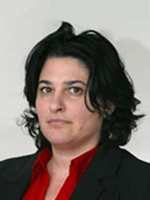View slides
Watch video:
Jerusalem is perhaps an extreme case of residential and travel market segmentation. It is comprised of four different 'cities', which partially overlap in space: The Jewish-Zionist city; the Palestinian city; the Jewish ultra-orthodox city and the global-tourist city. While the specific delineation of these cities is unique, Jerusalem can be seen as representative of other cities where ethnic and religious tensions create highly segmented urban spaces and travel markets.
In recent years particular emphasis has been placed on integrating transport systems, both across modes and with land use, in order to facilitate and encourage the use of public transport. Spatial integration suggests overcoming cultural and social differences that may be reflected with the units that are to be coordinated.
Spatial integration calls for minimizing differences among geographical unites in order to create a comprehensive, full network transport system with economy of scale. Therefore, there might be tradeoffs between integration and another highly recognized transport goal: responsiveness.
Responsiveness in highly segmented cities often involves political intervention that limits the integrative approach.
Dr. Galit Cohen-Blankshtain is a senior lecturer at the Department of Geography and the School of Public Policy at the Hebrew University. Her main research interests regarding public policies in various filed as transport, urban policy and environmental policy. She is interested at policy processes and examining different societal, institutional and political aspects of transport policy. Currently, Dr. Cohen-Blankshtain is a visiting scholar at the department of Geography, Environmental Sciences, and Marine Resource Management, Oregon State University.
